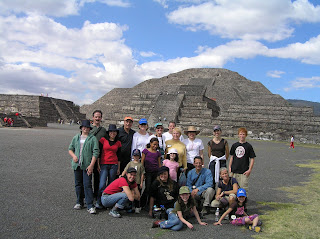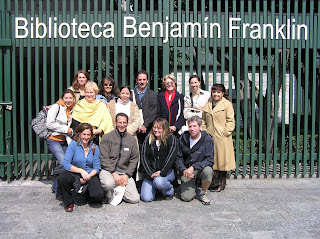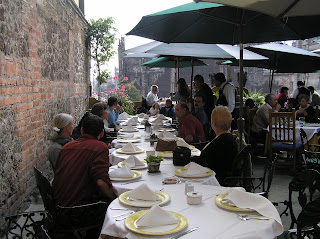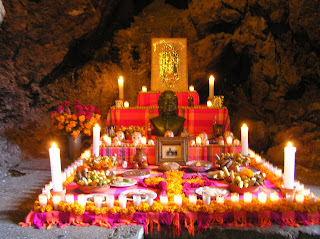
The cuetlaxochitl, a plant whose leaves turn bright red, is native to Mexico. Moctezuma cultivated it, and for the Aztecs it symbolized the "new life" of those who died in battle or were sacrificed. Its leaves turn a beautiful bright red in December and so the missionary friars used it to decorate their Nativity scenes, and it came to be called the Flor de Nochebuena (Christmas Eve Flower). Its botanical name is euphorbia pulcherrima (you Latin scholars know this means "most beautiful"). The first U.S. ambassador to Mexico (1825 - 1829), Dr Joel Poinset, imported it to the U.S. and it came to be known as the poinsettia.
In the weeks before Christmas these beautiful plants embellish the city. They ring the Alameda and form a carpet along the museum area of the Reforma. Here's a poinsettia "tree" at the Monumento a la Revolucion.

Over 8.5 million poinsettias are sold in Mexico in the weeks before Christmas; I assume that number doesn't include plants exported. The chinampas of Xochimilco are especially suitable areas for the cultivation of Nochebuenas; we bought ours at a display along the Reforma. Instead of a Christmas tree, we have a dozen poinsettias, a piñata, and a couple of nacimientos (Nativity scenes); it seems more appropriate somehow this year.

















































